Super-Thin Anisotropic Gridshell
Form-finding to fabrication of super-thin anisotropic gridshell
Roberto Naboni
ACTLAB – ABC Department, Politecnico di Milano, Milan, Italy
The paper discusses the process of computational design, analysis and fabrication for a lightweight super-thin gridshell structure.
Digital form-finding based on Particle Spring Systems is used to define a compression-based shape, which is discretized through a parametric process into box-shaped components with embedded assembly and structural logics.
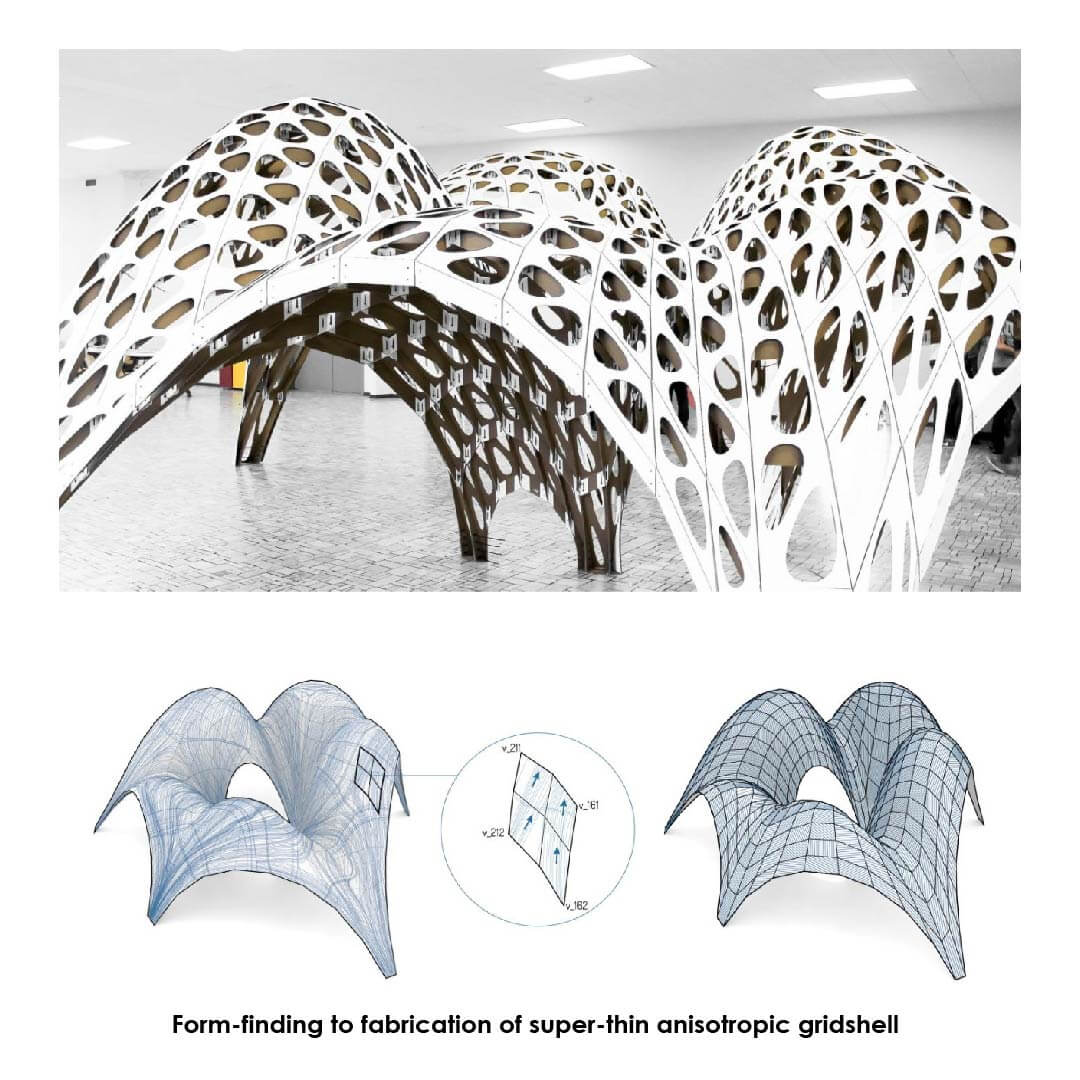 Strategies to maximize the behaviour of anisotropic construction boards, double curved forms and assembly precision are described.
Strategies to maximize the behaviour of anisotropic construction boards, double curved forms and assembly precision are described.
Results are thoroughly documented to highlight the potential of the approach to rapidly build temporary gridshell structures.
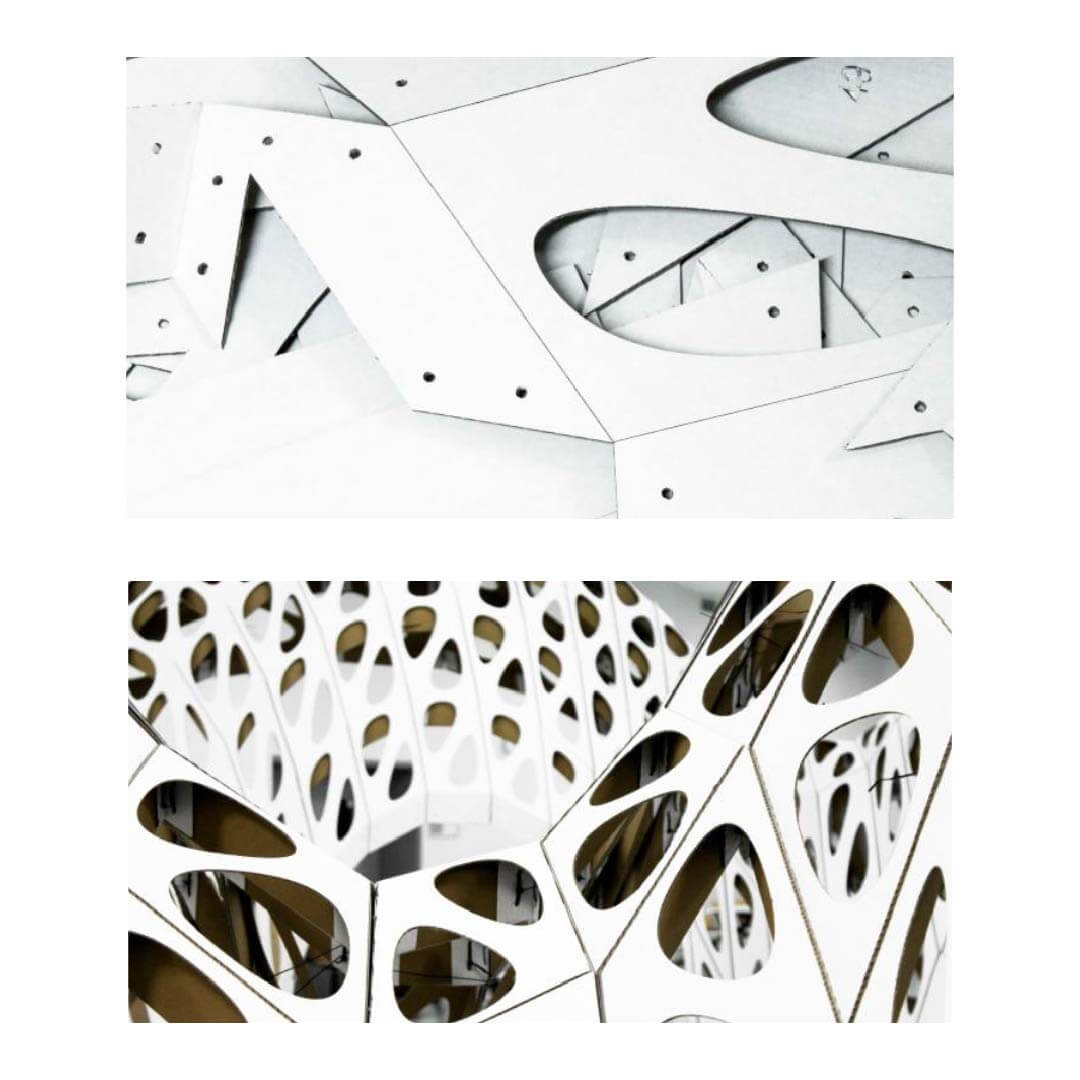 Lightweight structures were introduced as a field of study at the beginning of 19th century when the influence of construction engineering in architecture became more apparent.
Lightweight structures were introduced as a field of study at the beginning of 19th century when the influence of construction engineering in architecture became more apparent.
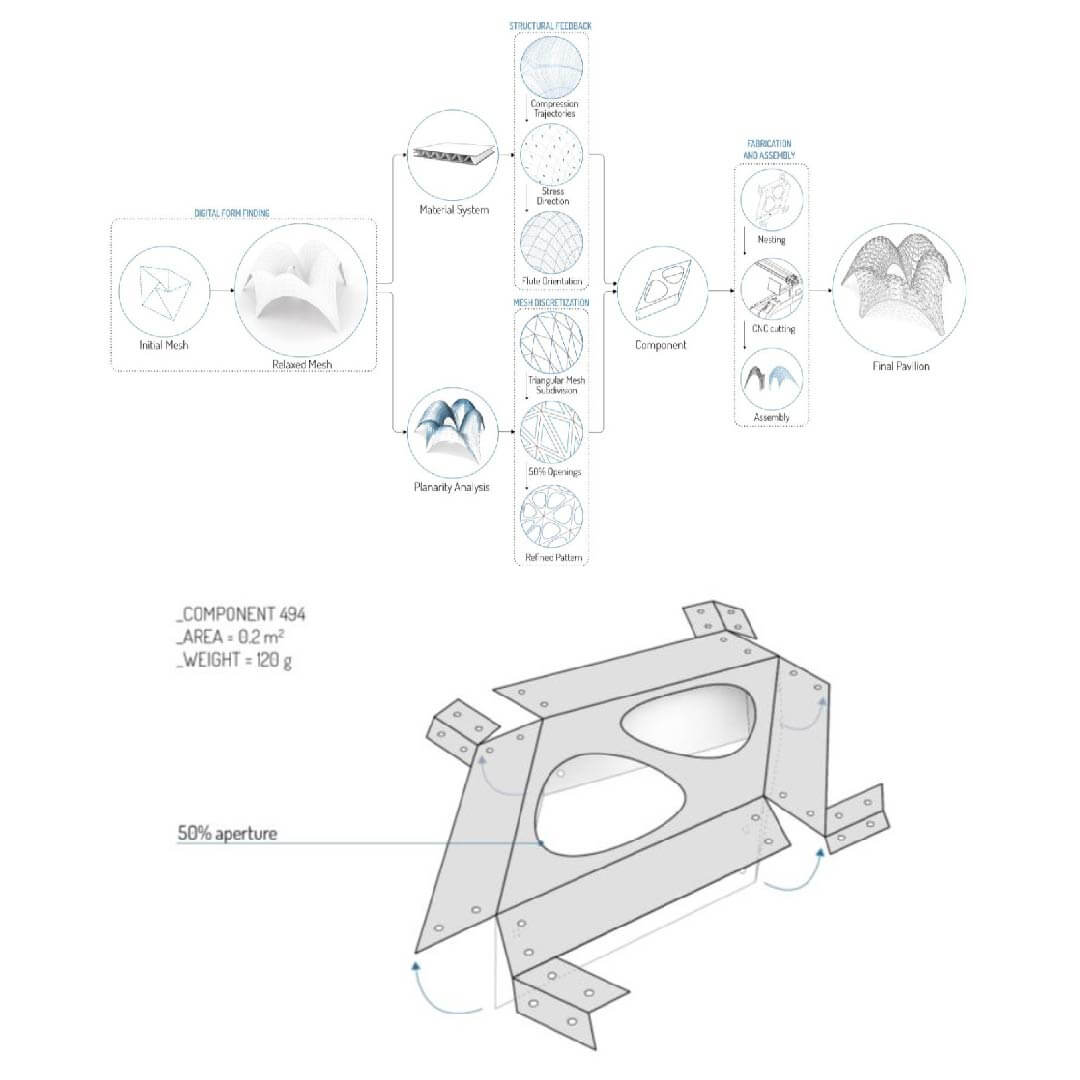 This architectural vision occurred in parallel with new understandings and innovations in many fields of science, the development of new materials as well as a novel thought process stimulated by the industrial age (Sobek, 2012).
This architectural vision occurred in parallel with new understandings and innovations in many fields of science, the development of new materials as well as a novel thought process stimulated by the industrial age (Sobek, 2012).
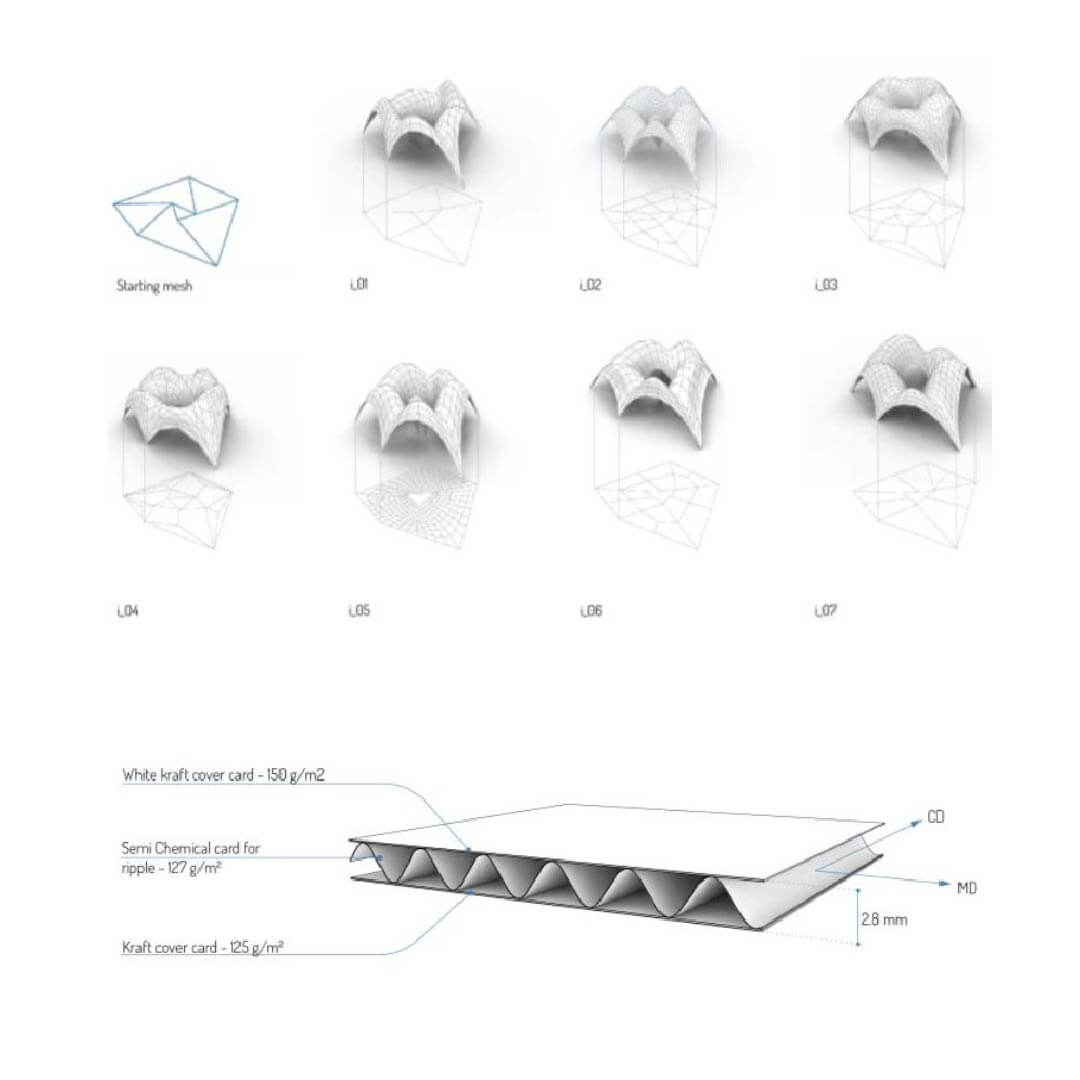 Nowadays, the accelerated development of computersupported research and analysis provide architects with a wide range of opportunities to design and study such structures.
Nowadays, the accelerated development of computersupported research and analysis provide architects with a wide range of opportunities to design and study such structures.
Historically, some of the pioneering masters of architecture have explored lightweight architecture. Among them, Frei Otto and Heinz Isler worked on exploiting the use of physical models to compute efficient and elegant forms, while providing exciting spaces to envelope closed or open areas.
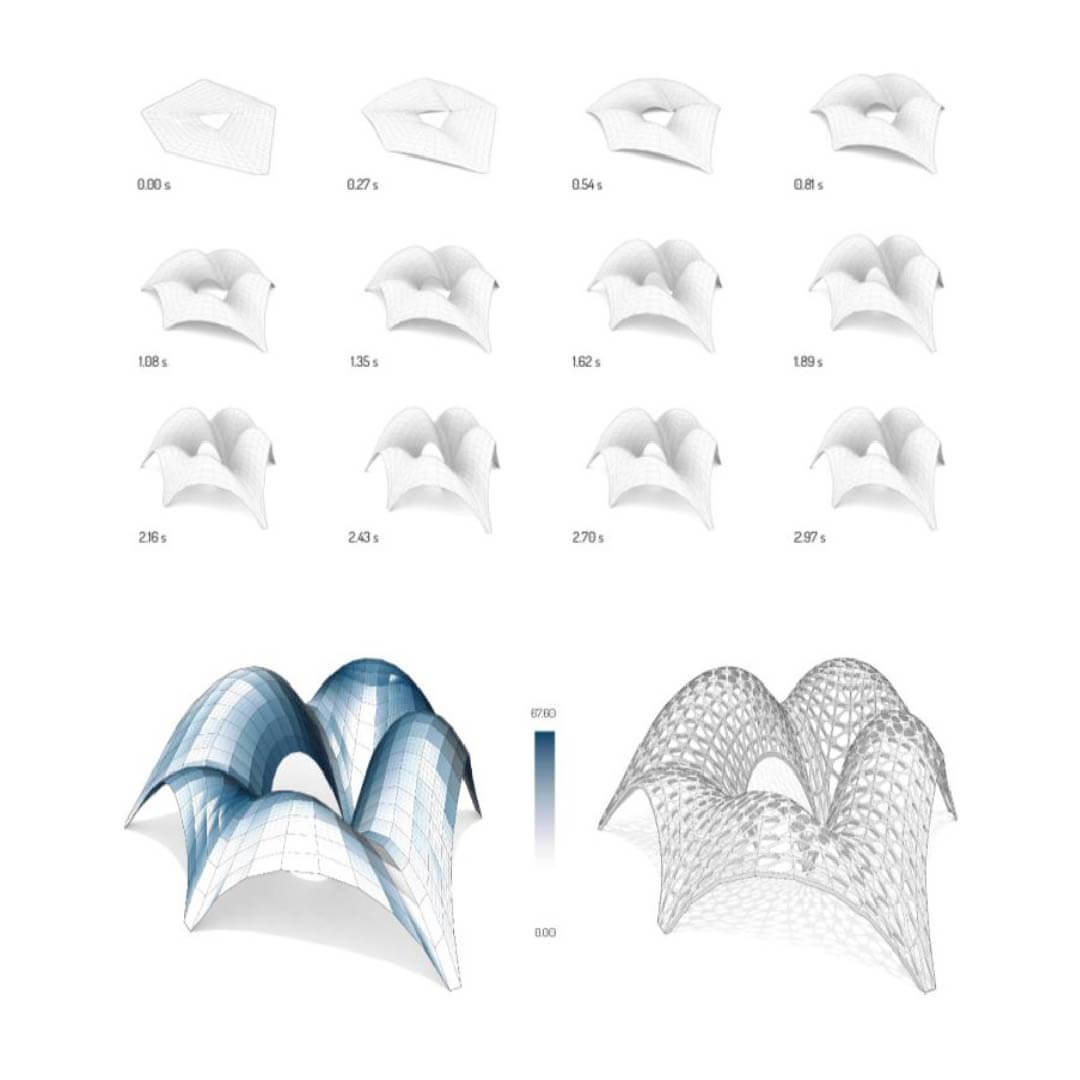 In recent years, lightweight structures and shelters have gained unprecedented popularity due to the opportunity of minimizing material, as well as the possibilities they open for off-site fabrication, modular assembly and a simple dismantling process.
In recent years, lightweight structures and shelters have gained unprecedented popularity due to the opportunity of minimizing material, as well as the possibilities they open for off-site fabrication, modular assembly and a simple dismantling process.
They provide efficient and sustainable spatial solutions, adaptable forms and a high level of optimization in material use and behaviour.
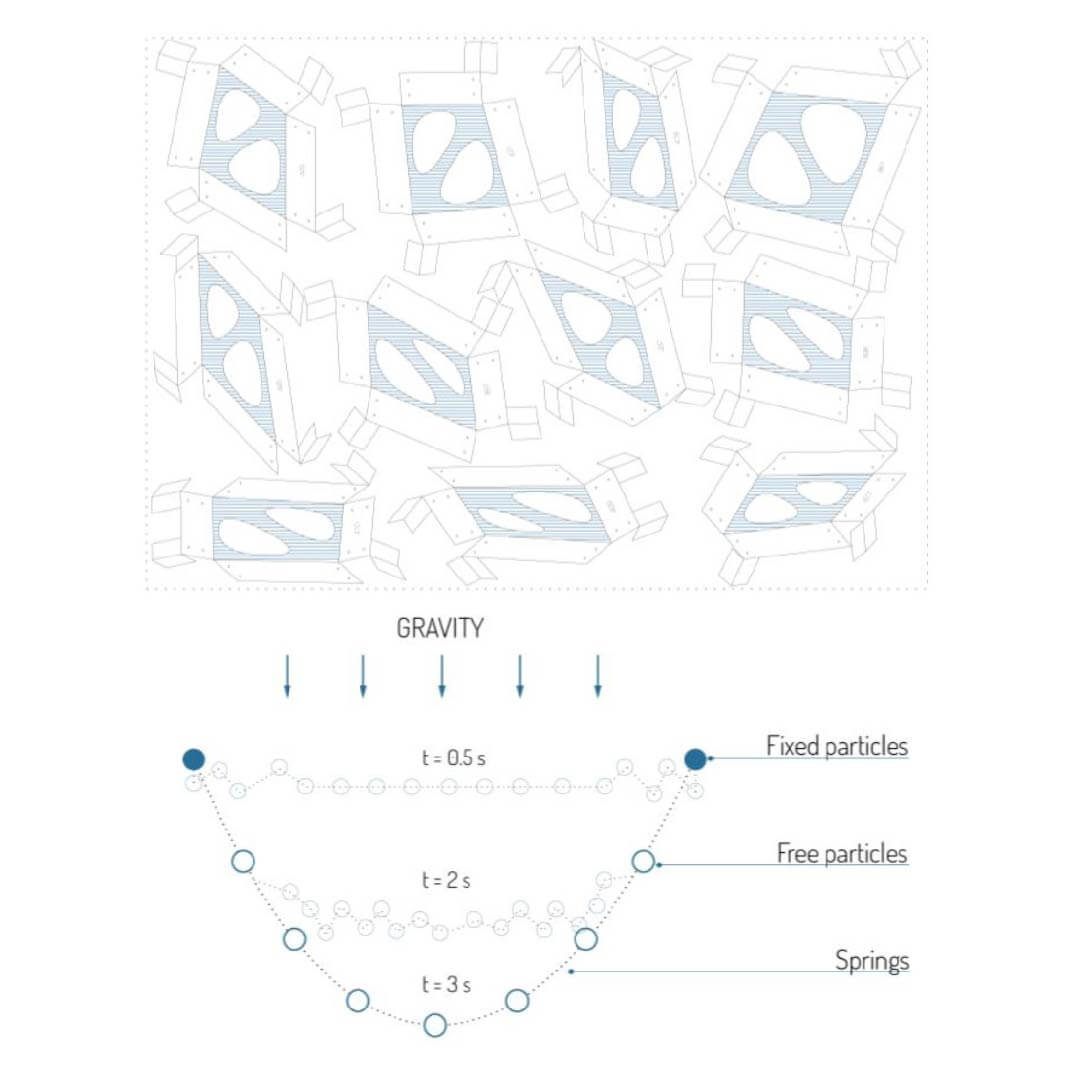 The design of complex shell structures necessitates a form-finding process, intended as a “forward process in which parameters are explicitly controlled in order to find an ‘optimal’ geometry of a structure which is in static equilibrium with a design loading”.
The design of complex shell structures necessitates a form-finding process, intended as a “forward process in which parameters are explicitly controlled in order to find an ‘optimal’ geometry of a structure which is in static equilibrium with a design loading”.
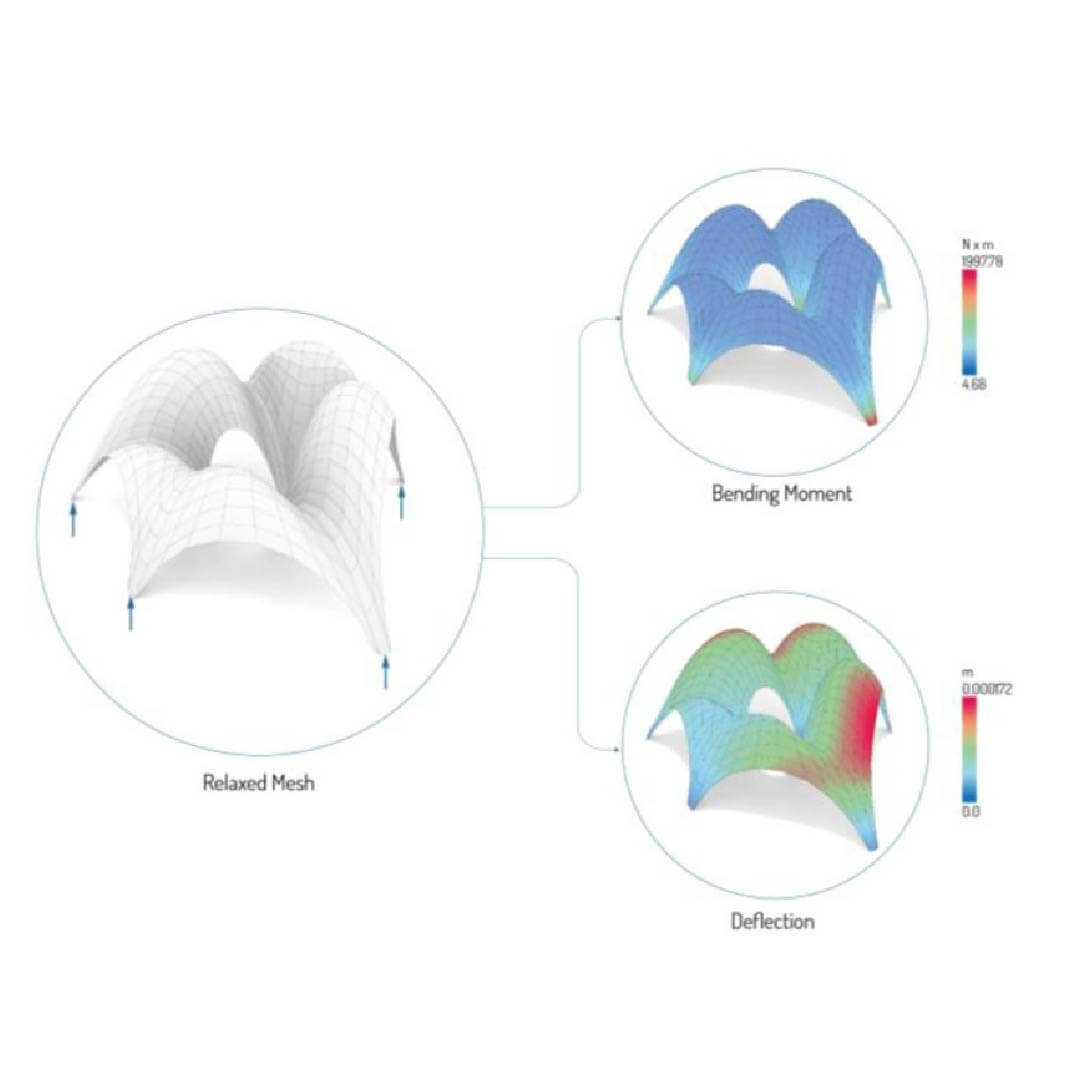 The common approach in the work of the above-mentioned masters of Frei Otto and Heinz Isler lies in the use of physical models to exploit the self-organization of material under forces, towards achieving stable forms.
The common approach in the work of the above-mentioned masters of Frei Otto and Heinz Isler lies in the use of physical models to exploit the self-organization of material under forces, towards achieving stable forms.
In this way, form does not originate from an abstract concept but from the inherent capacity of a material to compute efficient forms as a result of the negotiation between external forces and the inherent properties of the material.




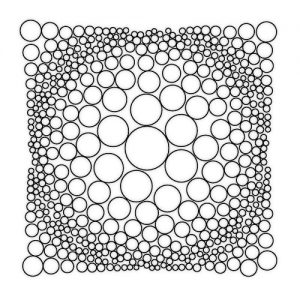























Comments